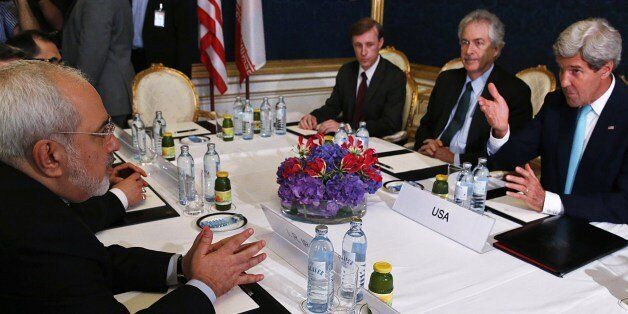
This article also appears in the Boston Globe
Last week's death of former Soviet Foreign Minister Eduard Shevardnadze brought well-deserved tributes for his central role in bringing the Cold War to a peaceful end. After Mikhail Gorbachev was named Soviet leader in 1985, Shevardnadze became his strongest supporter within the Politburo and closest collaborator on the twin policies -- glasnost and perestroika -- that drove the reform movement. He is a still unsung hero of the dramatic diplomacy that led eventually to the collapse of the Evil Empire more than a quarter century ago. Gorbachev and Shevardnadze were first met with skepticism and distrust in the United States and Europe. More than four decades of the East-West divide had hardened the West against the hope that a Soviet leader would promote radical change of a brutal, heartless system. But Ronald Reagan's secretary of state, George Shultz, an expert on labor negotiations who knew something about bringing bitter rivals together, decided to take a chance on diplomacy with Shevardnadze. Through countless meetings, phone calls, and negotiations, they gradually narrowed the great chasm that had separated American and Soviet leaders since the close of the Second World War. In negotiating the Intermediate Nuclear Forces treaty of 1987 and other agreements, they produced a dramatic improvement in U.S.-Soviet relations in Reagan's second term. When George H.W. Bush succeeded Reagan, his secretary of state, James A. Baker III, followed Shultz's lead by investing in the relationship with "Shevy," as he was called in Washington. Like Shultz, Baker understood a genuine diplomatic breakthrough required building confidence and trust with a former adversary. Baker's close and effective relationship with Shevardnadze was a major factor in the extraordinary achievement of German unification as a NATO member in 1990 and securing Soviet support to oppose Saddam Hussein's invasion of Kuwait that same tumultuous year. The outreach from Shultz and Baker to Shevardnadze was a model of diplomatic persistence, creativity, and courage. It also illuminates how we might proceed on another Cold War -- our 35-year struggle with Iran, now at a critical juncture. It is too early to judge whether Iran's reformist President Hassan Rouhani and Foreign Minister Javad Zarif will be able to bring lasting change to Iran as Shevardnadze and Gorbachev did to the old USSR. They are, after all, subordinates of Iran's Supreme Leader, Ali Khamenei, a recalcitrant and unreconstructed critic of the United States. But President Obama and Secretary of State John Kerry have made the same kind of calculation on diplomacy with Iran that Shultz and Baker made with Shevardnadze -- the potential upside outweighs the danger of sticking with the status quo. That is not, however, how everyone in Washington sees it. The Iran talks are scheduled to conclude this weekend in Vienna. But major policy differences remain, and Kerry will likely propose an extension of talks for a few more months. If he does, watch for a vocal pushback from a predictable chorus of Washington critics. They will charge that diplomacy has failed and is too soft, weak, and ineffective in dealing with Iran. Some will even argue it is time for Israel or the United States to contemplate military force. When that happens, we might recall some fundamental lessons about how diplomacy really works. Diplomacy in war and peace negotiations requires strategy and patience, not an illusory quick fix. Diplomacy is messy, often involving difficult compromises with unseemly governments. But it is also how the vast majority of international crises are actually resolved -- through negotiation rather than through the barrel of a gun. Those are worthy lessons to remember after the Iraq and Afghan wars. Kerry is the inheritor of a long diplomatic tradition at the State Department. His predecessors -- from George Marshall and Dean Acheson to Shultz and Baker -- understood that backing diplomacy with the threat of force was smart. But they also knew it was almost always better to exhaust negotiations first before turning to war. That's not bad advice for how we should think about Iran this week. Diplomacy may or may not succeed with Tehran's mercurial leadership. But, as with Shevardnadze and the end of the Soviet era, it promises a final lesson that is the most important of all. Diplomacy, at the very least, gives us a chance for peace.